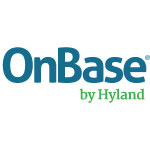Digital transformation is a major focus of government agencies today. But because it so broadly covers many different efforts – from legacy system updates to revamped employee or citizen services – it can be difficult to pin down exactly what digital transformation looks like.
Let’s look at an example of transformation in action.
Consider an agency that runs hundreds of different programs to support citizens in financial distress. To access benefits, a citizen first provides an application and supporting documentation.
Traditionally, that information would be filed on paper and would only be seen by one processor who is monitoring the claim. But with digital transformation, that info is no longer held in one silo or on paper.
Instead, the citizen’s information is shared securely in an enterprise content services system. Multiple groups can access the application and documentation. It’s available for other departments, so they can quickly determine eligibility for additional support without asking the citizen to fill out new, duplicate forms. Plus, both staff and the applicant understand where that application is in the process, because the process is digital rather than paper-based.
In that scenario, the constituent experience is improved and it’s easier for agency employees to perform their work. The same outcomes are found in all successful digital transformation projects – even if the specifics of the initiative look very different.
Whether it’s managing eligibility determination or something else like revamping contract processing or grants management – there is a common framework that you can apply.
That framework walks through six steps:
- Submit where the transaction is started, and documents or forms are accepted by the agency
- Assign where the work is tasked to the appropriate department employee
- Track where the employees and departments are able to monitor progress and manage deadlines
- Collaborate where employees from across an organization can view each other’s work, aggregate results, manage versions and share information across connected systems
- Status where internal collaborators can get updates on progress but, more importantly, constituents and submitters know the status of their requests
- Decision where you notify, track, or update the process for all stakeholders and ultimately complete the request
This framework not only provides a way to understand current or completed digital transformation initiatives; it can also be used to plan and execute new projects. Before implementation, you can use this framework to thoughtfully examine each stage of existing processes – to identify what is working well and what should be improved with better digital strategies or tools.
In fact, a key success factor for transformation projects is knowing where and how to focus your efforts and resources to improve. It also helps you build a strong business case to acquire and allocate those resources.
To learn more about how this framework can be applied and how to build a business case for transformation, check out our recent course on GovLoop Academy. The 10-minute course, Making the Business Case for Digital Transformation, will help you move your agency forward with strategic innovation.





This is a great framework for digital transformation, and I think it could easily be applied to other types of project management. Can’t wait to check out this course!